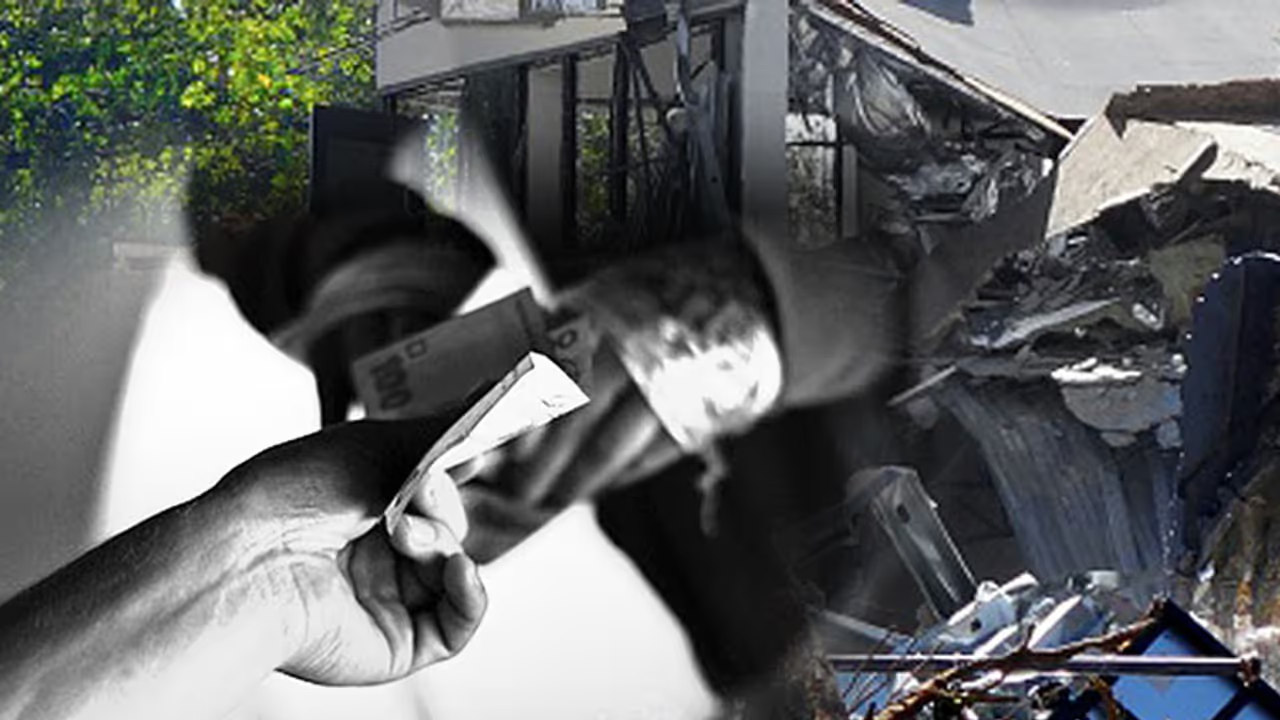Tamil Nadu violates the all-India norm of obtaining NOC from government bodies before constructing close to water bodies. Construction material for low-cost housing societies are majorly compromised. Illegal sand farming has led to closure of sand quarries that add to the justification of compromising with the quality of sand used for construction
Incessant rains has already started battering the state of Tamil Nadu. While the state is gearing up (although amid apprehensions) to face the clogged streets and the impending flood (which the authorities say might not happen this time), what lies ahead of them is much more grievous. After news of a 38-year-old man's death due to a wall collapse on Monday because incessant rains started making rounds of the Internet, Tamilians now fear of things falling apart for them in a greater way.

No security on roads and inside homes, citizens now have no option but to criticise the corruption that has taken them down with the rains. Their main cause of concern now is the way their houses have been built.
When money exchanges hands
As published in a 2016 report by The Hindu, the World Economic Forum projects that 50% of the total project cost of construction in India is attributed to bribes to speed up clearances for real estate and infrastructure business. Incidentally, this cost is then made up either by increasing the price of the property or by compromising with the quality of the raw material used. Needless to say, they fail to stand during incessant rains and other natural calamities.
The Chennai Silks Fire is a case in point. The incident, as if, opened a Pandora's Box in the face of the public pertaining to the rampant corruption in the real estate business in Tamil Nadu. In the year 2015, the Madras High Court had directed the Chennai Metropolitan Development Corporation (CMDA) to take action against illegal structures in 2015. The directive was put in place after the court issued a notice to tear down the construction of a four-storey residential building in Choolai area. The court also ordered the withdrawal of power and water supply illegally given to the building.
Furthermore, the government agency had asked the CMDA to conduct a survey to tear down all the buildings that violated the norms. Till date close to 194 buildings and builders have been blacklisted. The problem does not lie only with the commercial centers, residential areas too have issues with the number of storey and locations. For instance, in the year 2006, the Madras High Court found that 75 buildings in T Nagar had violated the norms then. in 2011, the CMDA took action against 25 commercial establishments in Usman Road and Ranganathan Street.
Incidentally, many more such constructions still exists, thanks to the money that exchanges hands under the table.
[Read: Chennai Silk Fire: The result of government apathy or corruption at play?]
Illegal construction besides lakes and eco-sensitive areas
According to an article by the FIRSTPOST, in Pulicat, a luxury resort was built dangerously close to the Pulicat lake, a ecological sensitive area that manages the water table in the area. While pollution to the water body is another thing of discussion, it should also be noted that construction near water bodies have to be specially designed since the soggy grounds can effect the foundation of the building. And when it rains, the buildings precariously depend on the unstable ground underneath.
According to a report by the Hindu, many states in India have clear Development Control Rules that prohibit construction within a specified distance from any water body. There is, however, no clear ruling in Tamil Nadu. The law states that if an applicant proposes to locate any plot for a building within 15m from the boundary of the channel/ water course and water body like Kulam, Kuttai, Eri, Tank, etc., a no-objection (NOC) certificate from the commissioner/executive officer/executive authority of the local body has to be obtained. The DCR of CMDA do not specify the extend of prohibition. It’s clearly specifed in other States. The Directorate of Tamil Nadu Town and Country Planning Department (DTCP) follows only the DCR specified by the CMDA.
Incidentally, some of the lakes that are grappling to cope with illegal construction include the Adambakkam lake, Pallavaram Periya Aeri, KeezhKattalai Lake, Perumbaakam Lake and more. Thus, when it rains, the water table underneath the constructions rises, thus destabilising the foundation of the buildings.
Compromising with the low-cost housing material
Low-cost housing have to maintain a balance between price management and the quality of construction. Incidentally, as in rest of the country, Tamil Nadu also struggles with real estate sharks that believe in using the bare minimum to gain the maximum. Cement, sand, bricks all have specific quality measurements set by the government, however none of it is followed.
Add to it the woes of sand quarries being shut across Tamil Nadu. According to a TOI report, close to 7 quarries have been closed due to the sand mafia insurgency and excessive depletion of the natural resources in the areas. However, that has affected the real estate in Tamil Nadu in a different way. Unable to retrieve sand, contractors resort to mixing impurities in the minimum sand available to them, which jeopardises with the quality of the construction.
Building housing complexes in ecologically sensitive areas, closing down lakes for construction and raising illegal multi-storied residential apartments can all be attributed to the rising demand of the ever increasing population in Tamil Nadu. But, it is to be remembered that we have to pay the price for the baggage that comes with it sometime or the other.
